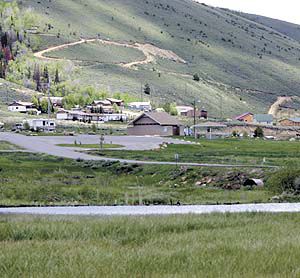For most who have spent time in Carbon County, recreation opportunities are often associated with the dry, desolate and arid environs of the desert.
Even for locals, camping in the desert for Labor Day, Easter or Memorial Day is a common pastime.
When it comes to aquatic activities, many instantly think of Price River and Scofield Reservoir for the fishing or boating opportunities afforded there.
But many seldom recognize the unique environment found in the wetlands of Scofield Reservoir.
Wetlands can form due to a variety of reasons. The term “wetland” is given to swamps, marshes, bogs and floodplains – just about anywhere that land has a natural supply of water.
Many of the wetlands surrounding Scofield are riparian marshes. The soil, water and vegetation found in wetlands are important, not only for the ecosystem that it is part of, but for the humans that rely on the resources in the area.
The wetlands serve a wide number of purposes. From a practical standpoint, the area helps filter silt that is churned up in the streams that feed into the lake. As the stream enters the wetlands, water slows.
Filtering through the lush vegetation, the water leaves much of the silt it caries behind.
In fact, studies at Scofield affirmed the need for wetlands. by increaseing the area used for wetlands, the overall quality of water in the reservior can be improved.
In wetter years, the flat expanse of the wetlands provide an area that can be submerged and covered with the increased water levels.
The shallow water and soft soil holds traces of the wildlife that frequents the area. Claw marks on trees mix with the scars left by the gnawing of beavers.
Narrow paths and trails show footprints of others that have been through.
The area is the perfect place for the nests of many water-loving fowls.
Wetlands are often home to muskrats, deet, elk, ducks, geese, grebes, ospreys, trout, frogs, and snakes.
Insects incuding the damselfly, dragonfly, mayfly, stonefly, and midge are found there as well.
Migratory loons, geese and herons stop in their flights from one seasonal habitat to another.
| The serenety and beauty of the riparian wetland is open to foot traffic only. Due to the amount of water that flows through the area, trails may be muddy and overgrown. |
Wetlands also serve a role in the food chain. By releasing vegetative matter into the water system, the wetlands are an important source of food for aquatic life.
In another bilogical role, wetlands are necessary for many species to reporoduce.
Trees and other vegetation provide the areas needed by fish and birds for their eggs.
As the role of wetlands has been studied over time, the view of the natural resource has changed.
Historically, the areas were considered to be a waste. The swampy ground has been long viewed as a breeding ground for disease and pests.
That is changing. Now, many are recognizing the need to protect these important zones for their vital roles, whether it by for wildlife, water resources, or flood control.

